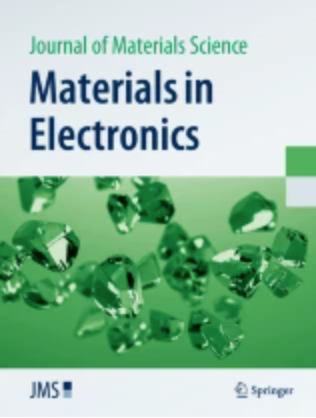Investigation of the effect of K-doping on the structural, dispersion, optical, and electrical properties of the Mn2VO4 thin films
Abstract
This study demonstrates the successful synthesis of potassium (K)-doped manganese vanadium oxide (Mn2VO4) thin films via nebulizer spray pyrolysis, proposing their application as a novel window layer for solar cells. The films were fabricated with varying K concentrations (0.04, 0.08, and 0.12 mol). X-ray diffraction analysis confirmed a cubic crystal structure for all films and revealed that increasing the K-dopant concentration induced significant microstructural changes: the average crystallite size decreased from 34.62 nm to 28.16 nm. Furthermore, the dislocation density and strain of the potassium-doped Mn2VO4 films were enhanced by augmenting the potassium concentration in the Mn2VO4 films. The energy dispersive X-ray (EDX) investigation confirms the incorporation of potassium into the Mn2VO4 films. Optical characterizations of potassium-doped Mn2VO4 thin films revealed a notable reduction in the energy gap from 3.02 eV to 2.69 eV as the potassium content rose from 0.04 to 0.12 mol. The refractive index spectra display a boost in the refractive index by augmenting the potassium content. The analysis of oscillator energy (Eo) showed a notable decrease from 3.43 to 2.29 eV, while the dispersion energy (Ed) increased from 11.25 to 16.51 eV as the potassium content increased. The activation energy of the potassium-doped Mn2VO4 thin films decreased with increased potassium content from 0.04 to 0.12 mol. This research suggests that potassium-doped Mn2VO4 thin films may serve as innovative window layers for solar cells.

 求助内容:
求助内容: 应助结果提醒方式:
应助结果提醒方式:


